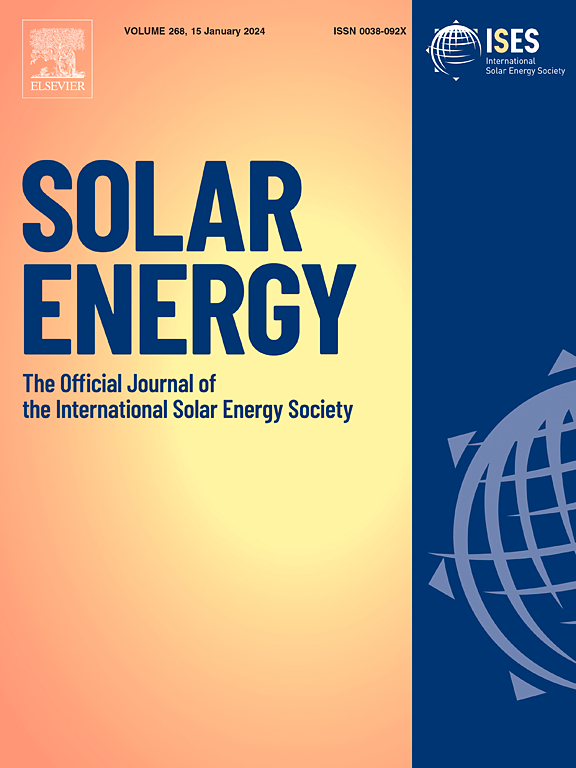Evaluation of the environmental performance of an innovative solar thermal system applied to the industrial sector: a case study
IF 6
2区 工程技术
Q2 ENERGY & FUELS
引用次数: 0
Abstract
An environmental assessment of an innovative solar thermal technology called ASTEP has been performed. ASTEP consists of three main elements: a novel rotary Fresnel Sundial, thermal energy storage (TES) and the controls. It supplies solar thermal energy to industrial processes of maximum 400 °C. This energy source has been implemented to two end-users, Mandrekas and Arcelor Mittal, located in the regions with low and high latitudes. The results revealed that manufacturing of the ASTEP system had the most significant environmental impact, followed by the operation, transportation and waste disposal. Within the manufacturing phase, TES components had the highest environmental impact. This was primarily due to the greater quantity of materials and energy required for TES manufacturing compared to the other components. When applied to the end-users, ASTEP system demonstrated notable reduction of CO2 emissions by 9.7 tonnes for MAND and 8.3 tonnes for AMTP. Furthermore, higher GHG emissions savings of 332 tonnes for MAND and 182 tonnes for AMTP could be achieved when the system’s capacity is increased to 950 MWh/year and 609 MWh/year, respectively. The research demonstrated that the incorporation of the ASTEP system into industrial processes would result in a significant reduction of their environmental impact.
应用于工业部门的创新太阳能热系统的环境绩效评价:一个案例研究
一项名为ASTEP的创新太阳能热技术的环境评估已经完成。ASTEP由三个主要元素组成:一个新颖的旋转菲涅耳日晷,热能储存(TES)和控制。它为工业过程提供最高400°C的太阳能热能。这种能源已经在位于低纬度和高纬度地区的两个最终用户,Mandrekas和Arcelor Mittal实施。结果表明,ASTEP系统的制造对环境影响最大,其次是操作、运输和废物处理。在制造阶段,TES组件对环境的影响最大。这主要是由于与其他组件相比,TES制造所需的材料和能源数量更多。当应用于最终用户时,ASTEP系统显示,MAND和AMTP分别减少了9.7吨和8.3吨的二氧化碳排放量。此外,当系统容量分别增加到950兆瓦时/年和609兆瓦时/年时,MAND和AMTP的温室气体排放量可分别减少332吨和182吨。研究表明,将ASTEP系统纳入工业过程将大大减少其对环境的影响。
本文章由计算机程序翻译,如有差异,请以英文原文为准。
求助全文
约1分钟内获得全文
求助全文
来源期刊

Solar Energy
工程技术-能源与燃料
CiteScore
13.90
自引率
9.00%
发文量
0
审稿时长
47 days
期刊介绍:
Solar Energy welcomes manuscripts presenting information not previously published in journals on any aspect of solar energy research, development, application, measurement or policy. The term "solar energy" in this context includes the indirect uses such as wind energy and biomass
 求助内容:
求助内容: 应助结果提醒方式:
应助结果提醒方式:


